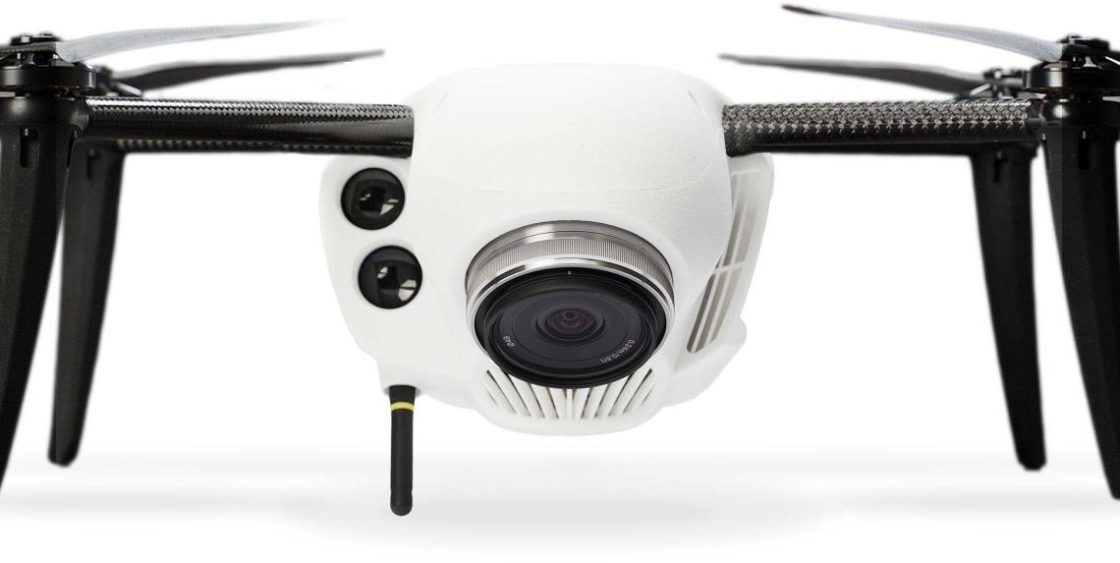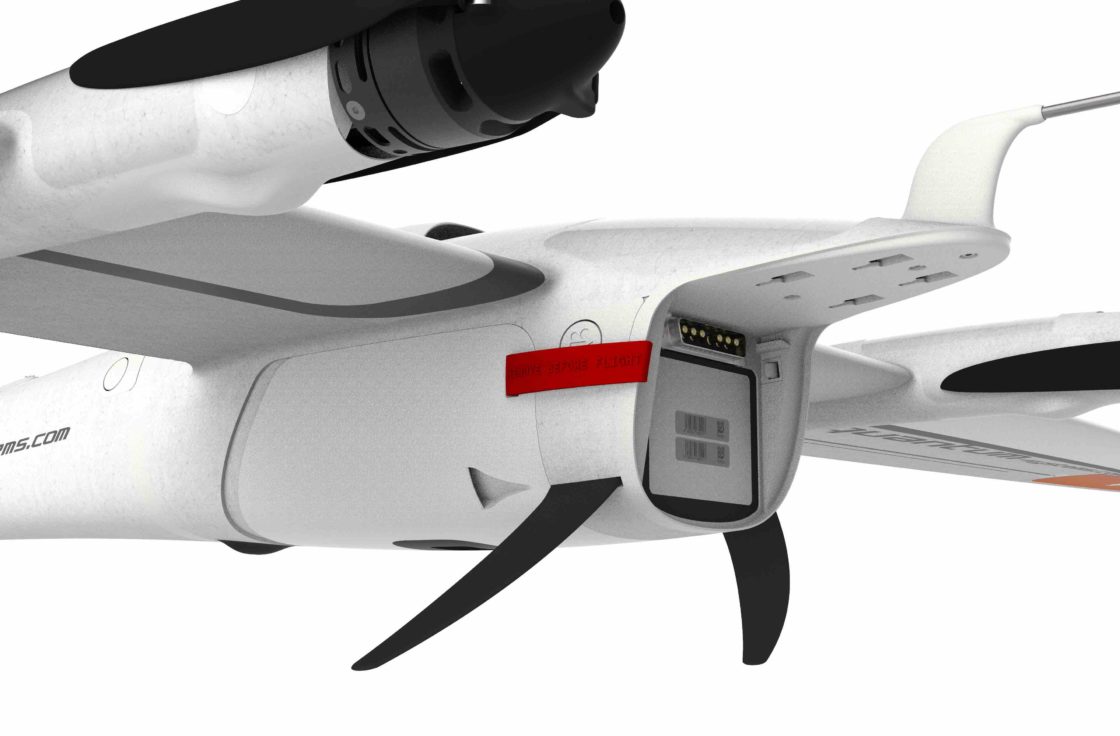
Imagine an evening when it seems completely normal to walk the dog and see drone traffic flying overhead, lit up against the familiar starry landscape of the night sky. Imagine a day when your neighbors are standing outside their front doors tapping their toes, listening for the familiar buzzing sound that means fulfillment of retail therapy, and within mere hours. Imagine a future where 3D printed drones can take care of important jobs in minutes—rather than days.
Many of us still have yet to see drones in action, but be assured that they are on their way, bringing positive changes in terms of productivity, methods for handling challenging situations, and increasing safety too as surroundings can be monitored and investigated without threat to human pilots.
Prepare for Takeoff: Big Plans Ahead
While research and development are still in the works for a wide range of designs—many of which will inevitably be 3D printed—drones are already slated to play an important role in an astounding number of global applications, and all because they can do one thing that humans cannot: fly. We can work a mean remote control or computer keyboard though, sending drones to soar above, assess, and often complete tasks expediently in what may be challenging terrain or treacherous circumstances.
Large areas of land can be tackled much more easily now too; for example, drones can survey enormous tracts of real estate or monitor crops spanning massive acreages—measuring and even inspecting them so that farmers are not left to do so in trucks or on foot. Labor can be cut exponentially, and the carbon footprint is reduced too, decreasing CO2 emissions.
Drone manufacturing becomes even more exciting, streamlined, and accessible with 3D printing, also highlighting nearly every advantage of this expansive technology, stepping all the way up from the hobbyist category to top-secret industrial production for military operations.
Quantum Systems: Successful Delivery of Medical Supplies with 3D Printed Drones
For companies like Quantum Systems, working with Shapeways means they are also able to develop and manufacture incredibly efficient 3D printed parts that are meant for multiple use with ‘integral functionality,’ thus reducing the number of pieces being made while still making a quality, high-performance product. Parts are lighter in weight too—and while that is usually a key benefit for 3D printing overall, in any type of aeronautic application it is far more critical in perfecting flight and speed.
Specializing in advanced electric vertical takeoff and landing (eVTOL) with drones which merge all of the benefits of larger aircraft like helicopters and airplanes, Quantum Systems has successfully tested their drones for delivering medical samples—evidence of one more application where such technology could make a real difference.
Founded in Munich in 2015, Quantum Systems notably began using 3D printing upon their inception, taking advantage of the ability to make numerous prototypes before moving on to final production of serial production parts 3D printed via selective laser sintering through Shapeways. While Nylon 12 [Versatile Plastic] has been a constant in terms of 3D printing materials, Quantum Systems has also used other materials like MJF Plastic PA12 with Shapeways.

“We used 3D printing right away, so there is no comparison. Quantum Systems is a young company. Only because of the fact that we have integrated this manufacturing method into our manufacturing and development process, have we been able to significantly reduce development time,” said Florian Seidel, CEO of Quantum Systems.
“For injection molded parts we save around 10 weeks by using 3D printed samples to release the CAD data. The probability that these parts need a second loop of corrections is quite low in this way. For CNC-manufactured parts it is the same, and we just often skip the first round of samples with 3D printed parts which saves us 3 to 4 weeks. In general I would say 3D printing saves us 20-50% in time, depending on which parts we design.”
The use of drones for delivery services goes far beyond futuristic hype, and especially when the technology is already being used for time-critical transport of medical samples or supplies in limited form. The potential for medical applications alone is exciting, and far reaching. 3D printers are already available to hospitals or medical facilities in some remote outposts, allowing scientists and medical professionals to make devices like prosthetics and orthotics, materials for casts or braces, and cases and housing for testing devices related to illness or even water quality.
Continuing further, drones can drop supplies into most remote areas, where accidents may have occurred, or where it is not initially possible for humans to enter for whatever reason. They can also be used to assess geography and assist with collecting necessary data for search and rescue missions. Drones for military applications in the future are nearly unlimited, but today they are already of critical importance for surveillance and reconnaissance missions, delivery of supplies and weapons, and even use in combat.
Kespry: 3D Printed Drone Technology Already Impacts Complex Applications
Kespry exemplifies the adaptability of drones, along with showing off their obvious power to disrupt long-standing conventional industries and practices, and in this case through autonomous, ‘hyper-detailed’ land surveys. Founded in 2013 and headquartered in Menlo Park, Kespry has also been 3D printing with Shapeways since their beginnings. Together, the two companies developed and manufactured something completely new with 3D printed drone models for end-use parts in Kespry’s Aerial Intelligence Platform.
“We were a very small company trying to scale up our product and get it out to market as quickly as possible. We were looking for a supplier who had reasonable scale and the right combination of lead time and cost,” said Jordan Croom, Kespry’s lead mechanical engineer who has a background in AM research and development in both metal and plastic—from his previous work in aerospace. ”We were in a unique place to be able to incorporate additive manufacturing into full-scale production, which I think is somewhat rare, even though it’s becoming more common these days. So that was new for me—to be making multiple hundreds of something per order and incorporate them into our production line.”
The ability to prototype quickly made all the difference too, allowing for easy and fast changes—in comparison to working with a conventional technology like injection molding where modifications could take months. Shapeways was able to work with Kespry as they continued to scale their business, going from 3D printing just a few parts each week to hundreds throughout a typical month—without affecting quality, functionality, or accuracy in parts. As a result, Kespry drones are now used for tasks like establishing risk assessment, assisting insurance agents in closing claims, managing inventory and planning mines, helping to oversee earthwork operations in large-scale construction projects and collecting site data, and surveying large factory operations like pulp and paper mills.
“Getting the right partner is definitely important to us. Somebody with repeatable quality, where we can prove a design once. We don’t have to worry about changing or breaking in future orders,” said Croom.
Shapeways Collaborations Continue to Inspire 3D Printed Innovation
The potential that lies within drone technology today is as vast as the air space above—and goes far beyond pizzas being delivered onto the front lawn for birthday parties. Innovative Shapeways customers already serve as excellent examples of how drone technology is changing the world, and these ongoing partnerships continue to be successful due to excellence in communication about product requirements, proper decision making in the use of advanced materials and technology, and resulting quality parts that are accurate and repeatable every single time.
Expect to hear more about 3D printed drone technology from Shapeways customers as programs in design, development, and manufacturing continue to mature. And if you have been working on your own drone model that is ready for 3D printing, create an account, upload your model, and receive an instant quote now.
3D printing services from Shapeways such as selective laser sintering (SLS) allow you to reap the rewards of high-performance, quality materials without having to invest all your business capital in the powerful hardware, software, and materials required for your build. Shapeways has worked with over a million users to help 3D print over 20 million products in 90+ different materials and finishes.
Enjoy the benefits of advanced technology and a wide range of materials for printing your creations with accuracy, complex detail, and no minimum or limits in terms of mass customization or single part orders. Read about case studies, find out more about Shapeways solutions, and get instant quotes here.



